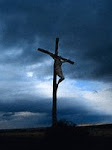
WHO ARE WE?
Most of us have memories of sitting through long sessions in high school history classes. We remember how our eyes became heavy as our teacher droned endlessly on about places and things that held no interest for us. After suffering through the mandatory requirement to graduate, we silently vowed never to let this happen again. History doesn't have to be dull if we approach it in the right manner. Unless we understand something about the vast sweep of human history, we will never understand ourselves. We are the product of all that went before us. History is exciting, and I will prove it to you if you will set up a little straighter in your chair and take a journey with me. Are you ready? Then here we go.
Most of us are familiar with the term, DNA. It first came to the attention of most of us during the O.J. Simpson trial a few years ago. Today, the use of DNA in criminal investigations has become routine, and it frequently plays a part in determining the outcome of paternity cases. A minute sample of genetic material can identify the parents of a child with certainty. The exciting thing about DNA testing is the fact that it can not only identify our parents, it can also identify our ethnic heritage, plus a lot of other things. A scientist can take a sample of DNA and project backward in time, identifying the groups of people from which we descended. Collecting genetic samples at archaeological sites has become routine in the last few years. This allows them to identify and chart the movement of people across the face of the ancient world. Scientists have proven that every person is a descendant of one man who lived in northern Africa 60,000 years ago. From that humble beginning, the human race quickly spread across the face of the earth. Then at some indeterminate point in time, a catastrophic event almost annihilated the human race. By studying DNA taken from the remains of some very ancient skeletons, scientists determined that less than two thousand persons survived this event, although they are not willing to hazard a guess at the exact number. I have a feeling there was no more than a boatload of hardy individuals who survived.
Eventually, the human race began to multiply again. They spread across Europe and into Africa, Asia, and the islands surrounding them. Then, they started to spread to all of the other land areas. They crossed to the Islands off the continent of Asia, then to Australia, Hawaii, and across three thousand miles of open sea to Tahiti. One group migrated around the cost of China, bypassed Japan, and up the coast to the Aleutian Islands. They eventually arrived at the Pacific coast of North America. We call this group Native Americans.
Mankind has always been restless, inventive, and adventuresome. It was rather astonishing when a team of archaeologists dug into a grave in Oregon and discovered a skeleton much older than the group known as Native Americans. When they ran DNA test, they discovered this was the remains of a Caucasian person of European descent. Then they found a skeleton of another Caucasian in Illinois, and then two others in a dig in South Carolina. Some of the tools found in South Carolina suggests they were related to the people who drew the cave drawings of prehistoric animals in France.
If DNA can tell us something about our beginning, then it becomes natural to ask the question: Who are we? Why do I have a medium build, brown hair, and blue eyes, while my neighbor is six foot tall and outweighs me by thirty pounds? This is something we can actually blame on our parents, and all of those who came before us. DNA is a tiny ribbon of genetic material present in each cell of our body. It is smaller than a dust mote floating in a beam of sunlight. If you were to unfold this ribbon of material, it would be approximately fifteen feet in length, but only three atoms wide. This miraculous substance contains the codes that determine our psychical characteristics. It contains a complete blueprint of our body. Think of DNA as being like a long array of electronic circuitry with many billions of switches along its length. Some of them are flipped on and others are flipped off. The switches flipped on are the ones that control our appearance and other physical characteristics. The genetic switches flipped to the off position don't perform any function, but we still pass them on to our descendants. This is the reason you do not look exactly like your brother or your sister, and the reason your child might have your great-grandfather's red hair, even though no one else in your generation has red hair.
Who are the people in our family tree? Most of the history of the human race has been lost. Some historical accounts are of doubtful value, full of fables and inaccuracies. It is exciting that we have the science of DNA which can tell us something about human history. When most of us think about family history, we only think about the people who passed our family name along to us. Everyone― even if they were adopted and never knew their birth parents― has two parents. In the next generation, there were four grandparents. Each generation has twice as many people as the previous one. A generation is about twenty-five years in length, with four generations in each 100 years. One hundred years before your birth date, you had 16 great-grandparents in that generation. Only one of them had your surname. Unless there was intermarriage, this is true of each generation. Two hundred years before your birth date, you had 256 grandparents in that generation. At the time the European nations were making their plans to colonize North America― which was about fifteen generations back― you had 32,768 grandparents alive on that date!
Labs that conduct DNA testing for genealogical purposes, can tell you which genetic group predominates your family tree. The first immigrant bearing your family name might have come from England in the middle of the sixteen hundreds. This person was English― but wait a minute! The Englishman of the 17th century was a mixture of Brythons, Anglo-Saxons, Danish Vikings, Bretons, Normans, and many others thrown in for good measure. Your ancestor's English surname was passed down to his descendants, but if your family located in a town predominately inhabited by some other ethnic group, then it is likely most of your 65,536 grandparents who lived since the middle sixteen hundreds, were not English. This brings us back to our original question. Who are you? The next time you pass through a kitchen and someone is baking a cake, look in the mixing bowl and see is you can find the vanilla. We are an astonishing mixture of races and nationalities― we are everyone, but most important, we are uniquely ourselves.
NEXT UP: WHERE DID WE COME FROM?
































